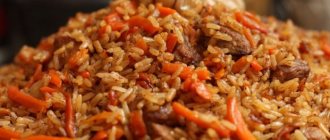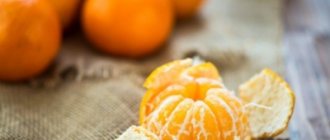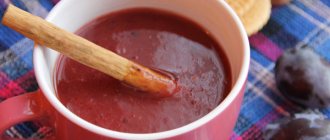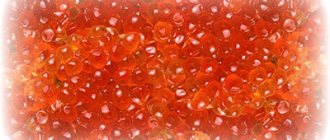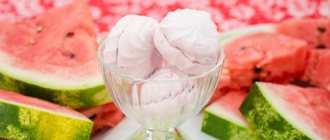Everything that enters the mother’s body with food also passes into breast milk, affecting the development of the baby. In addition, due to disruptions in the mother's gastrointestinal tract, including during pregnancy, antigens that cause allergies are not eliminated from the body as they should, and also enter breast milk, causing pathologies in newborns. How to prevent them? Read the article about what a nursing mother can eat.
Nutrition rules
In European countries, nutrition during lactation is practically no different from nutrition before it. In our country, many have elevated breastfeeding to the rank of heroism. There is practically nothing a nursing mother can do, especially in the first month after giving birth, if she wants to get rid of gas, colic and other troubles associated with the early development of the baby.
But did you know that all these troubles are a consequence of the baby’s natural adaptation to the outside world. Initially, he ate through the umbilical cord, and now he will be fed through the stomach. Give him a couple of weeks of training and it will work out. To do this, ensure that the body receives the most important substances:
- Carbohydrates - they should make up about 50 - 60% of all products. This is the energy that young mothers so need.
- Protein – should be about 20%. They are building materials for the body, so both mother and her baby need them equally;
- Fat – about 20 – 30%. These substances take an active part in metabolic processes, therefore, are responsible for the absorption of vitamins and microelements, health, and excellent well-being.
Already in the first days after childbirth, you should start a food diary, which will display the foods introduced into the diet and the child’s reactions to them. If an allergy occurs, the product is abandoned for several weeks, and then it is tried again.
To avoid confusion, new products are introduced three times a week, every other day, before lunch in small quantities. They enter the baby’s body within 12 hours, allowing you to observe him for a day, and if problems arise, deal with them by the evening, ensuring a healthy sleep at night.
It is not recommended to eat for two during lactation. Feeding requires about 800 kcal per day. This is the amount by which you need to increase your daily caloric intake through healthy foods. Special applications for gadgets help you do this without harming your figure. Download them and calculate different food options. To improve lactation, follow the drinking regime and take special teas from the pharmacy.
In the first days after childbirth, it is recommended to eat small portions of liquid food. This is especially important if there have been perineal ruptures or hemorrhoids. Too thick food provokes the appearance of thick feces, which can cause the seams to separate. If the situation is serious (sutures were placed over large areas), the doctor may recommend giving up foods rich in fiber: fruits, vegetables, rye bread, bran, as they improve intestinal function, increase gas formation, and quickly remove feces.
Allowed dishes: soups, liquid porridges, fermented milk products. In the first 3 weeks after birth, it is important to ensure that all food is thoroughly cooked. If the baby has no health problems, dietary restrictions are lifted at 2 months. But this does not mean that you can eat absolutely everything at once. Simply, it's time to introduce new products and monitor the child's reaction to them.
Several rules concern drinking regime. In the first days after the baby is born, you should not drink more than 1 liter of liquid. This applies to the period when colostrum appears. Otherwise, when it comes, there will be too much milk and this, on the one hand, will impede its outflow during sucking, and on the other hand, will provoke lactostasis.
Allowed drinks: water, milk, teas, juices. With the arrival of milk, the amount of liquid you drink can be increased to 2 - 3 liters per day.
You will be interested in: the best recipes for dishes during breastfeeding that will make any mother stunned.

Recommendations
Despite the listed negative phenomena, cream in the amount of 10-20 ml per day is recommended for nursing women:
- With insufficient body weight.
- With asthenia.
- With low hemoglobin.
- In the absence of an allergy to cow's milk protein.
Use only natural cream. They should not contain preservatives or milk fat substitutes. Any harmful component is transmitted through breast milk and has a negative effect on the baby.
Provided the mother is in complete health and there are no visible contraindications, you can add 1 teaspoon to weak tea or water from the first week.
In order not to cause harm to the baby, the product should be introduced gradually in the morning after feeding, so that during the day the baby’s possible reaction to cow’s milk protein can be monitored.
If within 24 hours you notice that the baby turns red, cries often, or irritation appears on the skin, you should temporarily forget about the cream.
In order not to make a mistake with the product that caused such a reaction in the baby, you need to introduce 1 new product every other day, which will eliminate the unreliability of the experiment.
Cream for a young mother can be consumed with any drinks, added to sauces, meat or fish, vegetable and fruit purees.
What can you eat
For your convenience, a table is provided that includes permitted foods during breastfeeding.
| Product | Explanation |
| Meat | This is protein. Lean varieties of young beef, rabbit, turkey, domestic chicken, chicken liver, and lean pork several months after childbirth are suitable. They can be baked, boiled or stewed. |
| Fish | Choose low-fat types of river and sea fish. As a rule, they start with hake and pollock, subsequently adding pike perch and carp. They are baked and steamed. Consume twice a week, avoiding meat on these days. |
| Dairy and fermented milk products | You need to eat them daily. When choosing, you should pay special attention to fat content. The permissible limit for milk is 2.5% - no higher and no lower. Drink no more than 200 ml per day. Yoghurts without fruit additives are allowed in quantities of no more than 600 - 800 ml per day. Mild cheese and cottage cheese with a fat content of 5–9% are healthy. When using the latter daily, it is important to monitor the baby’s fontanel, making sure that it does not close quickly. In the first month, many pediatricians recommend avoiding cow's milk. |
| Vegetables | Pumpkin, zucchini, dill, and parsley are allowed a couple of weeks after birth. It is recommended to introduce carrots and beets at 3 months, consuming them boiled or baked; the main thing is to monitor the baby’s reaction, because beets can weaken. Potatoes are allowed from the first days. At the 3rd month of feeding, you can introduce cabbage, and any kind is allowed if the baby does not suffer from colic. It is better to postpone legumes until six months. |
| Fruits | The very first possible treats are green apples and bananas. It is baked or eaten raw, after washing well beforehand. Allowed is 1 banana per day and 1 - 2 apples. In the second month after giving birth, you can add little by little other seasonal fruits, such as plums. It is better to refuse imported and exotic ones for now. |
| Porridge | Buckwheat and oatmeal are allowed literally from the first days. It’s just that they are initially prepared with water and then with milk. Rice is eaten with caution, as it can make you strong. Wheat and pearl barley are introduced no earlier than six months, or even later. |
| Spices, spices | Mint, celery, basil, oregano, thyme, tarragon can be tried at 3 months. Onions in soups are allowed from birth, and fresh green onions - from 3 months. |
| Soups | Vegetables and cereals in low-fat broth. |
| Bread, pasta | Yesterday bread made from wholemeal flour, including bran, is allowed, and it is better to choose pasta from durum wheat. You can eat bagels and crackers (not to be confused with store-bought, salty ones). |
| Fats | Vegetable oils (sunflower, olive, corn) are allowed, with which you can prepare dishes, butter in a volume of up to 15 ml per day. |
| Nuts | Walnuts are allowed. |
| Beverages | Compotes, fruit drinks from lingonberries, cherries, gooseberries - from 1 month. Herbal teas, green tea and weak black tea with milk are useful. |
Which cream to choose
There are several types of cream - low-fat, medium-fat, full-fat and very fat. As mentioned above, it is best to choose low-fat and low-fat cream when breastfeeding. But if there is no other choice, then you can dilute them with boiled water.
They also come pasteurized and sterilized. In this case, you should choose the first option, since at high temperatures most of the nutrients and vitamins disappear, and then the product will simply be useless.
Before purchasing, you need to carefully study the composition of the product. This should be done, as plant components are often included in the composition. Stabilizers, preservatives, and dyes are also possible. Such creams should be avoided.
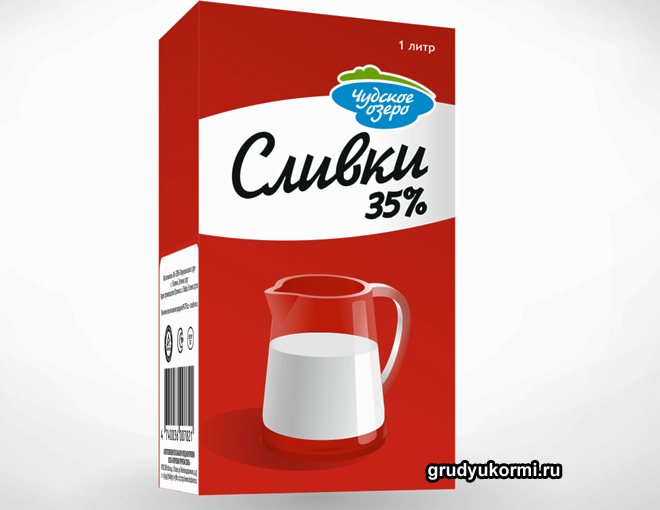
In addition, before purchasing, you need to check the expiration date and integrity of the packaging. The product itself must be stored in the refrigerator; stores often neglect this rule.
The best choice is homemade cream. They will be more useful and complete. But even at the same time, it is necessary that the selling farmer has all the necessary certificates and certificates.
| fat content, % | calorie content, kcal/100 g | proteins, g | fats, g | carbohydrates, g |
| 10 | 118 | 3,0 | 10,0 | 4,0 |
| 15 | 161 | 2,3 | 15,0 | 3,6 |
| 20 | 205 | 2,8 | 20,0 | 3,7 |
| 33 | 322 | 2,2 | 33,0 | 4,0 |
| 35 | 337 | 2,5 | 35,0 | 3,0 |
Cream is a very tasty and healthy product. It is very popular for its mild taste and nutritional value. If you and your child do not have a negative reaction, then it can be added to various dishes. This will help in recovery after childbirth and when feeding the baby. They will give mother greater health and good appearance. As well as the full development of the newborn. Even if you don’t like it as a drink, you can add it to main dishes, replacing sour cream (which, by the way, is made from them) or butter. Don't forget that thanks to them your milk will become fattier and in larger quantities.
The diet of a nursing woman is divided into several important stages. Over the course of 3 months, the functioning of the newborn’s digestive system, as well as the process of producing digestive enzymes necessary for the breakdown of breast milk, takes place. During the first 3 months of life, the main food for a newborn is mother’s milk, so at this stage there are special requirements for the components of the mother’s diet.
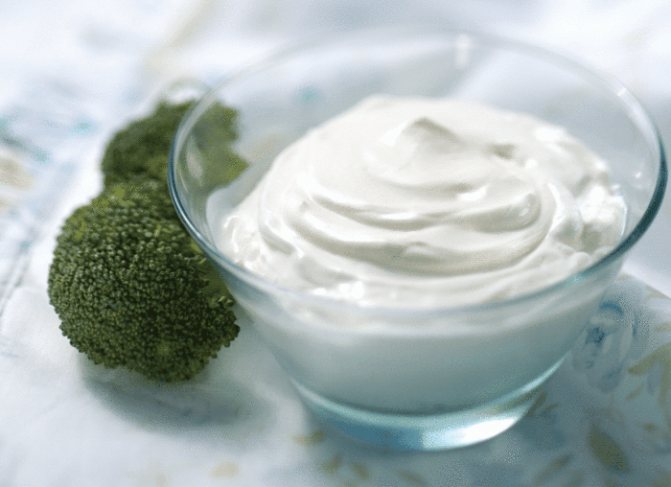
The consumption of certain foods causes the development of digestive disorders in the baby, the appearance of intestinal colic and the formation of intestinal dysbiosis.
- fruits from the citrus family;
- products containing cocoa powder (chocolate);
- bell and hot peppers, garlic, onions, celery;
- legumes;
- spices, rye bread, carbonated drinks, grapes, black tea and coffee;
- alcoholic drinks, including beer.
All these products can cause indigestion and increased gas formation in the baby’s intestines.
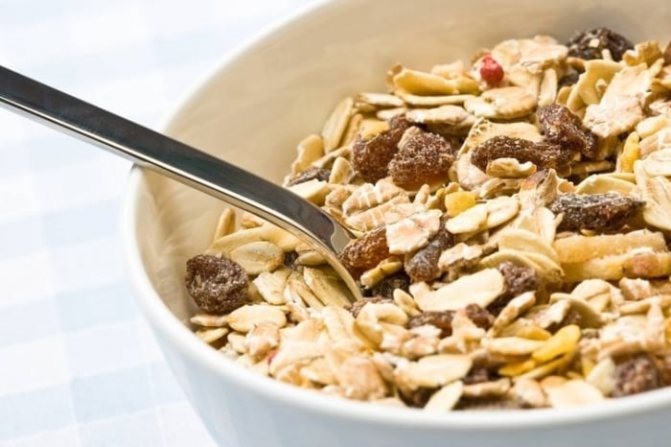
The list of recommended products includes:
- boiled and stewed vegetables;
- cereals, cereals and muesli;
- foods rich in animal protein (cottage cheese, meat, fish);
- fresh herbs and fruits (except citrus fruits);
- fresh berries (blueberries, gooseberries, black currants).
What you can do with caution
Thus, the products that you can eat, but be careful, include:
- melon;
- fresh kefir;
- beans and peas;
- vegetable oil in its pure form, for example, when dressing salads.
Please note that just because these foods are in the yellow zone does not mean you can't eat them. It is possible and even necessary, but in moderation and gradually introducing it into the diet. Simply because they provoke bloating, colic, and upset stomach in the baby.
The following group causes constipation if taken in excess:
- cow's milk - not all children tolerate its protein;
- black currant;
- red fish;
- eggs;
- millet, corn and even semolina porridge, especially if the latter is cooked in milk.
Freshly squeezed juices are best introduced from 3 months. You can start with apple and carrot. Fruit drinks made from black currants and blueberries are also suitable.

During this period, different types of nuts are gradually introduced, except peanuts and pistachios. Apple or cherry jam is used as sweeteners, honey and sour cream are tried, and quail meat is prepared.
What is not allowed and why
First of all, the group of potentially dangerous products for babies includes:
- Bitter dark chocolate (the one with about 70% cocoa) is a strong allergen. According to some pediatricians, you can try to introduce milk or white chocolate into your diet from 3 to 6 months, but it is important to be prepared for an allergic reaction.
- Seafood, some types of fish and caviar are the first to accumulate heavy metals. Caviar may be of poor quality and cause poisoning. Shrimp are an allergen. Among the fish that cause allergies are mackerel, tuna, and red fish.
- Raw vegetables are prohibited in the first two months, especially store-bought ones, as they can cause poisoning. In addition, they improve intestinal motility and cause bloating.
- Citrus fruits and exotic fruits are allergens that are allowed only after 3 months, and they must be administered in slices. What fruits and berries are still dangerous? Grapes and plums, apricots, if the baby is swelling.
- Watermelons - they can be poisonous.
- Semi-finished products, sausages, smoked foods, fatty broths, pickles - cause colic in the baby.
- Mustard, horseradish, hot peppers, garlic, hot sauces, onions (not to be confused with green feathers) - cause heartburn in the mother, abdominal pain in the newborn, and change the taste and smell of milk. If you really want to, they can be introduced no earlier than 6 months.
- Blue cheeses can cause poisoning.
- Black strong coffee and tea cause anxiety in a child.
- Any alcohol.
When planning your diet, remember that nutrition during lactation is not a test, but an investment in the health of your child. Do it now, and in the future he will appreciate your efforts.
Oils have been used for many years in cooking, cosmetology and medicine. In everyday life, any woman often resorts to using them. What to do when you have to breastfeed your baby? Should you give up your favorite olive oil-based salad dressing? Is butter bad for breastfeeding?
How to choose quality oil
Is it possible for a nursing mother to eat butter and how to choose the right healthy product?
General recommendations:
- A high-quality product is produced only according to GOST standards. The corresponding inscription must be present on the packaging.
- The product contains only cream. The presence of plant components indicates low quality.
- “Proper” butter has a fat content of at least 75%.
- The shorter the shelf life of the product, the more natural it is.
- High-quality oil is packaged in foil, which, unlike paper packaging, protects from the destructive effects of sunlight.
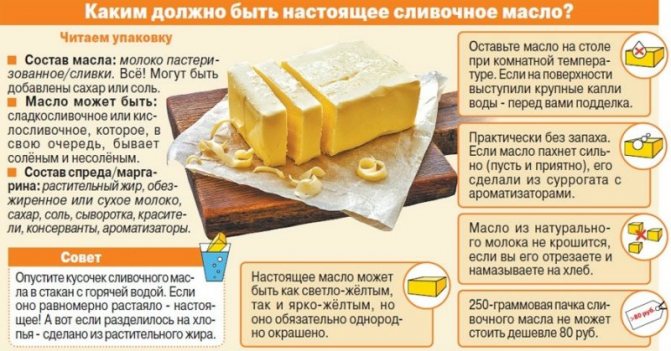
Also, special attention should be paid to appearance:
- color – whitish-yellow, a very bright shade of yellow may indicate the presence of synthetic dyes in the product,
- consistency is homogeneous, dense,
- natural butter melts quickly enough,
- a natural product should have a distinct creamy smell.
Often on store shelves you can see butter, quite affordable, with a low amount of fat. Young nursing mothers, wanting to return to their former forms as quickly as possible, buy it without thinking about the harm that consuming low-quality butter can cause to the baby’s body.
As a rule, in order to reduce the cost of production, the manufacturer adds palm or peanut fat, taste and smell enhancers, and preservatives to the so-called butter. All these dangerous components can cause allergic reactions in a newborn.
Important: butter during breastfeeding must be of the highest quality.

Butter for hot water
Most women deny themselves this product in everyday life, not to mention during breastfeeding. All fears are associated with high calorie content, high fat and cholesterol content. Yes, indeed, if you abuse butter, there is a risk of obesity and high cholesterol in the blood. But with moderate use, no troubles will follow, and the product will only bring benefits.
The benefits of judicious consumption of butter during breastfeeding are quite great:
- Vitamins A, D, E help maintain the beauty of skin and hair, visual acuity, strengthen blood vessels, and enhance the body's immune properties.
- The beneficial substances and fats in the product have a positive effect on the composition of breast milk, making it more healthy and nutritious for the baby.
- With the help of the pleasant taste of this product, you can enrich many dishes and make the menu of a nursing mother more varied and satisfying.
- The vast majority of experienced mothers note that butter is perfectly digestible and does not cause allergies or colic in infants.
When breastfeeding, you need to carefully monitor the dosage. It is permissible to eat no more than 30 g of product per day. At the same time, you can add it to porridge, season pasta, or eat bread and butter for breakfast.
You can introduce butter into the diet already in the first month of a newborn’s life, since it is not a strong allergen, although it is made from cow’s milk. But do not forget about individual intolerance. Negative reactions in infants are still possible in very rare cases, so be sure to monitor the baby after consuming this product. If rashes, bloating, or colic appear, it is necessary to exclude it from the diet for some time. After a few months, you can try to return to it again.
How to use oil correctly for a nursing mother
Nursing mothers can and should eat butter. Neither pediatricians nor obstetricians-gynecologists classify it as a product prohibited during breastfeeding. Moreover, along with other dairy products, it helps a woman recover faster after childbirth and establish lactation.
At the time of birth, a newborn baby’s digestive system is at the stage of formation. In the first weeks of his life, the baby’s intestines are populated by microflora and begin to break down and assimilate food. The body of a nursing mother adapts to the needs of the child: it learns to produce as much milk as the baby needs. The composition of milk also changes as the baby's gastrointestinal tract (GIT) matures.
At this stage of a baby’s development, it is not uncommon for his digestive organs to produce less enzymes than is required to break down the breast milk entering his gastrointestinal tract. This leads to digestive disorders in the baby in the form of flatulence and colic, which are often caused by fatty foods consumed by the nursing mother. Therefore, it is recommended that a woman during lactation introduce butter into her diet no earlier than 3 weeks after childbirth.
This needs to be done gradually:
- Start with a quarter teaspoon (1-2 g).
- The next day, double the portion (2-3 g).
- After another day, you can add 1 tsp to your food. (5 g) butter. But this is only if its appearance on your menu does not negatively affect the child’s well-being.
Here's what this limitation entails:
- animal protein, which is quite abundant in butter, can cause an allergic reaction in a child;
- blood sugar increases;
- the high content of milk fat and cholesterol puts additional stress on a woman’s liver and pancreas and negatively affects the functioning of the cardiovascular system, which can have a detrimental effect on her health.
A heaping tablespoon contains 17 g of butter, a teaspoon contains 5 g. That is, you can safely eat 2 sandwiches with it for breakfast or add it to porridge .
But frying in butter or adding ghee to dishes is not recommended for nursing mothers. When exposed to heat, harmful carcinogens are produced and vitamins are destroyed.
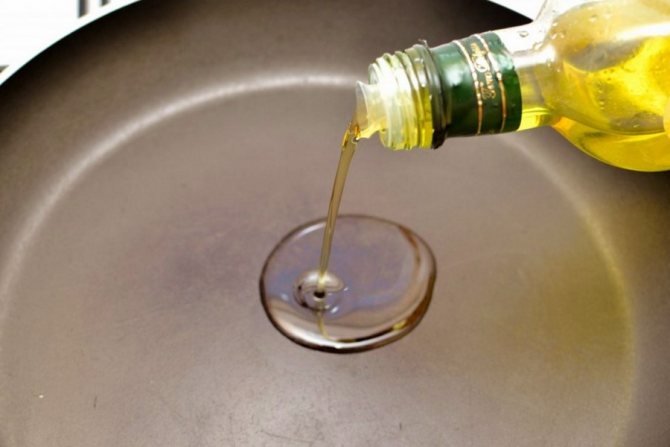
It is better to fry foods in vegetable oil
Watch not only the reaction of the baby’s digestive system when including this product in your diet. The oil contains milk protein, to which a child may develop an allergy (most often it is a skin rash) . In this case, you can try enriching your menu with butter when the baby is 3 months old. Again, introduce it into your diet gradually. If the child reacts to the product with a rash again, the next attempt can be made at 6 months.
If a child is diagnosed with allergic dermatitis, Dr. Komarovsky recommends stopping the use of butter altogether.
When breastfeeding, try to reduce the fat content of mother's milk. Kefir - 1%, cottage cheese 0%, ban on lard, sour cream, butter, fatty broths, etc. Drink more, sweat less.
Komarovsky E. O., pediatrician
https://articles.komarovskiy.net/allergicheskij-dermatit.html
You can add butter to first and second courses, as well as snacks (soups and borscht, porridge and pasta, hot salads, sandwiches, etc.). Very often it is included in desserts and baked goods. But remember the high calorie content of butter itself and dishes containing it in large quantities.
Possible harm and precautions
In small quantities, butter is considered a healthy, easily digestible product, a recommended element of baby and dietary nutrition. If the norms for its consumption are observed, butter will not cause harm to the health of a nursing mother and her baby. If the baby is allergic to milk protein, it is better for the nursing mother to avoid eating butter. Problems may arise if you use it frequently in large quantities.
Exceeding the recommended daily intake of butter can lead to:
- to an increase in blood sugar;
- to excess weight gain and obesity;
- to the development of diseases of the cardiovascular system;
- to allergic reactions in a child, digestive problems.
If enzymatic deficiency is diagnosed in newborns, introduce oil into your diet after the child is three months old . Do this gradually, starting with very small doses.

If a child is allergic to protein, the mother should completely stop using oil.
Vegetable and olive oil when breastfeeding
The most commonly used oils in cooking are sunflower and olive oils. These products are probably found in every home. Are they good for a young nursing mother? Yes, they are useful! It is not only possible, but also necessary to use them during breastfeeding.
First of all, the benefit lies in vitamin E, which is found in large quantities in both sunflower and olive oil. This vitamin is simply necessary for the proper development of reflexes, the nervous system, and the brain of a newborn. The use of vegetable oils enriches a woman's milk with vitamin E, which is passed on to the child.
Olive oil contains Omega-9 and Omega-6 fatty acids, which have an extremely positive effect on the development of the child’s musculoskeletal system, growth and bone strength. In addition, they are involved in the development of the brain and visual organs.
Despite the many positive properties, vegetable oils are a very high-calorie product, so you should not abuse them. Two or three tablespoons of the product per day will not harm, but more can cause obesity.
In addition, excessive consumption of olive oil leads to the accumulation of excess Omega-6 fatty acids in the body, which in large quantities are converted from beneficial substances into toxic ones.
They cause blood clots, various types of tumors and inflammatory pathologies. But here we are talking about huge quantities that are difficult for an ordinary person to eat, so you should not be afraid of these ailments.
Don't forget about food allergies. In this regard, olive oil is the safest, since sunflower oil is a fairly strong allergen. After the first use of a dish with vegetable oil, you must carefully monitor the child’s reaction. You can introduce the product into the diet in small doses already in the first month of breastfeeding.
Flaxseed oil for breastfeeding
Flaxseed oil is a source of valuable Omega-3 fatty acids that are not synthesized in the human body. They can only be obtained from fish oil or fatty fish, as well as flaxseed oil. It is thanks to this property that the product is recommended for use during breastfeeding.
However, this is a rather difficult nutritional component to digest, so you need to use flaxseed oil while breastfeeding carefully and do this after 2-3 months from the start of breastfeeding. The daily dose of flaxseed oil for a nursing woman is half a teaspoon. This amount of product will be enough to enrich breast milk with fatty acids.
Under no circumstances should you exceed the dose! A large amount will have a negative effect on the baby rather than benefit it. It's all about plant phytohormones, which are contained in flaxseed oil. These hormones can not only negatively affect the development of the baby’s genital organs, but also weaken the effect of a woman’s natural contraception when breastfeeding.
Important: Flaxseed oil is prohibited for use in the first weeks after childbirth, as it can increase bleeding. Also, you should not take it after a caesarean section.
Other types of oils for hot water
Castor oil can also be very beneficial during breastfeeding. The best known use of this product is as a laxative. Many mothers suffer from constipation, in which case castor oil will be an excellent medicine that is compatible with breastfeeding. Often one dose of the product is enough to achieve excellent results.
Castor oil is well known as a folk remedy for completing lactation. To do this, you need to massage the mammary glands with oil and wrap them in a warm scarf. Typically, several procedures are sufficient to significantly reduce milk production or completely stop lactation.
Another useful product for a nursing mother can be sea buckthorn oil. It has a wound-healing and bactericidal effect and can become a panacea in the fight against cracked nipples. You need to treat the skin every time after feeding your baby. In very rare cases, the baby may develop an allergy if the oil is not completely absorbed into the skin and enters the baby’s body through breast milk. The reaction appears in the form of a rash and redness.
It is very good to use this product as a cosmetic product. Most women notice that after pregnancy the condition of their hair and skin leaves much to be desired. Masks with sea buckthorn oil will restore shine, strength and beauty to your hair. It's good to add a couple of drops of this unique product to your regular body cream or face mask. The skin will noticeably transform after regular use of such products.
Oils can provide many benefits during breastfeeding. You just need to learn how to use them correctly and calculate the dosage so as not to harm the baby.

